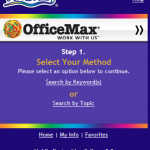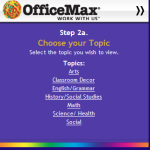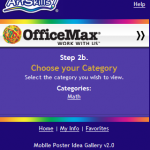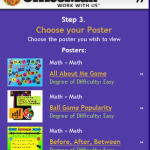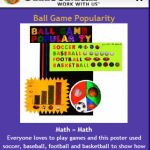“How quick come the reasons for approving what we like!”
~Jane Austen
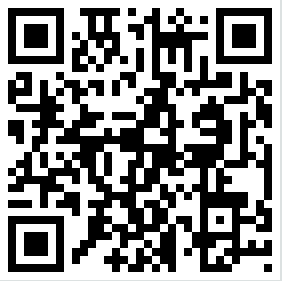
Let’s say you’ve put up a new menu board to help you introduce new lunch items but you don’t have time to make up new brochures that explain the products in detail, or room on the menu to describe them in more depth? Or what if you put up a new display of art products and you want to give customers ideas of how they can use them to create new projects, but you don’t have the space to include finished project samples or a How-To guide? QR codes are a possible solution for you.
QR codes are a form of barcode that stores far more information than the traditional bar codes you are used to seeing on grocery store products, for instance. QR is short for Quick Response, and the codes were developed to make it easier for people to obtain more information than is immediately available than other means such as having to write down a website URL. QR codes were invented by a subsidiary of Toyota in 1994 and have been used extensively in Japan and South Korea, but are just now starting to emerge as a more common marketing tool in the U.S. [NOTE: The QR code above is to a youtube video showing various applications in Japan].
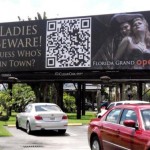
QR code generators are free to use. Just visit a site such as Kaywa.com or goqr.me, drop in a destination URL and the image will be created for you. You can then place it anywhere your customer can see it and scan it.
Here’s an example of how Office Max is using QR codes to deliver its customers more content than it’s able to share at the point-of-purchase. My critique and recommendations follow the pictures.
I was buying a poster board and found it in this display of paper, pens, stencils and other related items under the Project Idea Center.
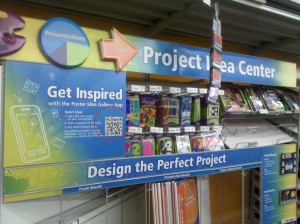
The display had a call to action of “Get Inspired with the Poster Idea Gallery App.” It instructed me how to get inspired as follows:
Here’s How:
1. Use a QR reader on your smart phone
2. Take a snapshot of this code
3. Get instant project ideasFor additional project supplies and ideas, visit our art supplies section or artskills.com/officemax
The code took me to an Office Max sponsored subdomain of the website artskills.com, which is positioned as “Easier. Faster. Better Posters.” and which is targeted to students and teachers who want to make posters.
Critique
Consumer insights – I walked into Office Max with the purpose of buying poster board. I am not very artistic, so I was interested in getting new ideas of how to design a poster (without messing it up and ultimately throwing the poster board away and having to start over), and in learning more information that would have given me some confidence that I could execute my project successfully. In this respect, the QR code was effectively used to lead me to seek additional content.
Call to Action – “Get Inspired” is an effective emotional trigger. In retrospect, what I would have liked to have seen was clarity around who this call to action is appropriate for. Leading a marketing professional to a website tailored to school teachers and students was ultimately a waste of my time.
Landing Page – In my humble opinion (IMHO), the promise of quick response falls down here in this example. I don’t know how difficult it would be to quickly get me to an inspirational example of a poster idea that I could create (perhaps images of different finished projects that made me go “Wow, I can do that?!”), but having to navigate through four different screens before I see any samples just felt excruciatingly difficult, and ultimately, I did not end at a solution that was anywhere near where I wanted to be. Even if I were a teacher or student, I would have given up trying to find inspiration and just made do with what I had.
One other critique, which may or may not be a commonly encountered one is that the landing pages were only optimized for mobile. While it is critical for the customer who opens the website in the store (and with her mobile phone), there will be some who email or text the link to themselves (or others) with the intent of opening it and doing research when they get home. The images I shared above were taken from my laptop at home and looked paltry and again, uninspiring.
Summary
While consumers in the U.S. have not fully embraced the idea and practice of scanning barcodes in stores, I do believe that it will become more common in the not too distant future. After all, it provides benefits to both the consumer, who is seeking more information about products and solutions, and for marketers, who are able to be a resource that provides it. QR codes allow for you to easily share more content to your customers.
I believe there are a lot of ways to test using QR codes for little or no cost aside from the planning, content development and preparation.
As with all content, however, its value is only derived in its usefulness to your customer in solving her problems or in making her more successful. In this Office Max Poster Idea Gallery example, I’d say it mostly wasn’t.
